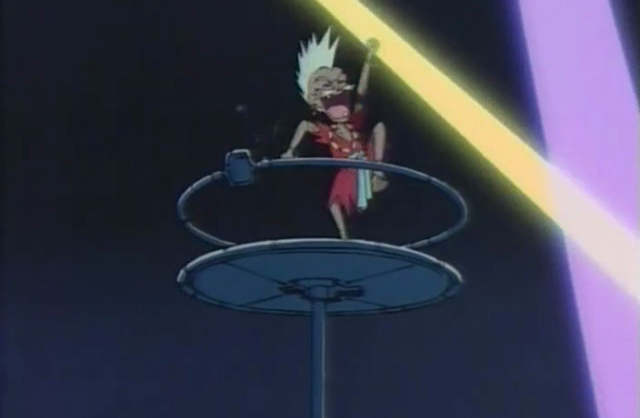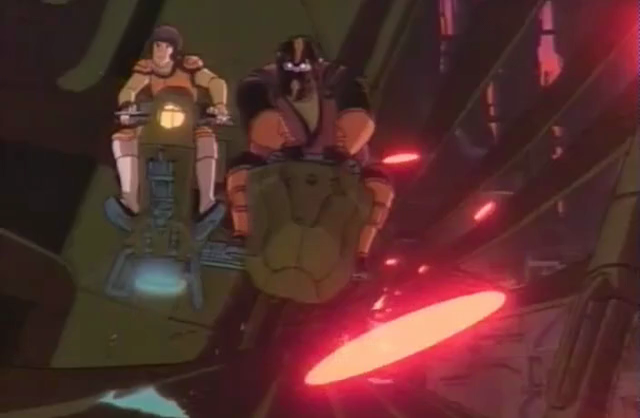
On May 25, 1977, a small little indie film titled Star Wars (1977) was unleashed onto the world and captured the imagination and hearts of fans and artists alike. It featured a brand new world with sweeping spaceship battles, larger than life characters, crazy aliens and took many familiar genre and story elements, repackaging them in a refreshing way. It soon became one of the highest grossing films of all time, but you probably already knew that. As is to be expected with any landmark film, rip offs and cash-ins soon followed, giving the space opera genre a resurgence in pop culture.
In live action cinema, it seems that everyone had massive hopes of becoming the next big success, resorting to possibly “non-copyright infringing” movies. These included the likes of Starcrash (1978), which was the first ever appearance of David Hasslehoff’s mullet, Hawk the Slayer (1980), featuring John Terry as Han Solo’s brother and Jack Palance as Darth Vader’s cousin, Message from Space (1978) featuring Vic Morrow’s moustache, and the revival of Flash Gordon (1980), which had a soundtrack by Queen and featured the priest from The Exorcist (1973) as the goatee-rocking Ming.
In the Far East, the Japanese have always had a keen interest in science fiction, with authors such as Leiji Matsumoto (Galaxy Express 999, Space Battleship Yamato), Osamu Tezuka (Astro Boy, Phoenix), Mitsuteru Yokoyama (Tetsujin 28, Giant Robo) and Go Nagai (Mazinger Z, Devilman) making influential all time classics. The success of Star Wars further lead to space operas such as Super Dimension Fortress Macross (1982-1983), Mobile Suit Gundam (1979-1980), Space Adventure Cobra (1982-1983) and Odin: Photon Sailer Starlight (1985).
On July 7th, 1984, 409 days after the release of Return of the Jedi (1983), Lensman (SF Shinseiki Lensman in Japanese) was released in Japanese cinemas and is notable for a few reasons. For one, it was one of the first animated films, alongside Golgo 13 (1983) and Rock & Rule (1983), to incorporate CGI for certain scenes. Secondly, it is an adaptation of a novel series that was serialized between the 1930s to the 1950s, from the founder of Space Opera, Edward Elmer Smith. Interestingly, when first conceiving Star Wars, George Lucas (THX 1138) actually used terminology from various pulp sci fi novels in an early draft of the script, including a few taken from the Lensman novels as a point of inspiration.
The film was produced by Madhouse (Paprika, Summer Wars) and was directed by Kazuyuki Hirokawa (Magical Girl Pretty Sammy, Space Warrior Baldios) and Yoshiaki Kawajiri (Ninja Scroll, Vampire Hunter D: Bloodlust) in his directorial debut.

After an oddly familiar opening text scroll, the film begins in the 25th century on the backwater planet, Mqueie. An 18-year old farm boy named Kimball Kinnison, who is living with his father Gary, dreams of leaving his home, and plans to travel to Earth with a longtime friend, Peter van Buskirk. Gary warns them about a signal of for an incoming ship, known as the Britannia, which Kim hijacks and lands safely on Mquie. He is then given a Lens, which brands him as a Lensman (a cross between the Jedi and the Green Lantern), and starts him off on a rip roaring adventure to defeat the villainous Boskone Empire and save the Galaxy.
The film follows a rag tag group of characters led by Kimball, including the archetypical damsel in distress, Clarissa (AKA, a more useless Princess Leia), the bumbling strong sidekick Peter van Buskirk (A.K.A., a more dim-witted Chewbacca) and the sharp shooting bounty hunter Worsel (AKA, like Han Solo mixed with a Pterodactyl). This rebel alliance is fighting against the evil Boskone Empire, who are all led by Lord Helmuth (A.K.A Darth Vader and Emperor Palpatine’s spikey mecha love child), and his hoard of completely disposable sidekicks. Throughout the story, Kimball’s gang is joined various side characters, the most memorable of which being DJ Bill (A.K.A Dragon Ball’s Master Roshi meets Maiyart from Wicked City), and the loving father, Gary (A.K.A Uncle Owen meets Obi Wan).
Despite being only minor roles, DJ Bill and Worsel were my favourite characters. DJ Bill was likeable for his crazy antics and carefree party boy attitude, and Worsel’s cool stoicism and caring side were appealing as well as his action set pieces. Although the film is nearly two hours long, most of the characters just tend to feel a little weak and it would have been nice to have had more moments of character development for them to feel three dimensional. It would also have been nice to have had some slower moments for reflection or world building to make the universe feel more tangible.

Overall, the Animation is pretty solid, with some generally stimulating and kinetic action sequences. Strangely enough, when the characters are attacked by tentacle monsters, it never goes below the belt, as one would be forgiven for expecting from an 80s anime that was released around the same as Lolita Anime (1984-1985) and Cream Lemon (1984-2006). The backgrounds were produced by a team of experienced artists, who created incredibly detailed animation and unlike a lot of anime released at the time, are not still, but move with the characters.
The characters designed were handled by Kazuo Tomizawa (The Door into Summer, Legend of the Galactic Heroes) and Yoshiaki Kawajiri himself. The characters themselves have a very nice aesthetic that feels like a mix between Moebius, Heavy Metal and the Valerian comic books. The mecha designs were created by Koji Morimoto (Noiseman: Sound Insect, Toki no Tabibito: Time Stranger) and Takashi Watabe (Cyber City Oedo 808, Neo Tokyo), and both did a great job at creating weird and otherworldly spaceships and robots.
The computer generated animation is blocky yet charming, and used effectively. For the most part, it is incorporated into the world fairly well, though it can be confusing when ships that were CG suddenly become hand drawn. One scene later in the film shows Kimball fighting against illusions conjured up by Helmuth, that felt like a cross between TRON (1982) and Enter the Dragon (1973), and the use of 2D animated character vs CG illusions worked particularly well.

The score was composed by Akira Inoue (Lily C.A.T, The Cockpit), featuring insert songs by The ALFEE (Galaxy Express 999: Eternal Fantasy, Figure 17) and consists of an eclectic mix of 80s power ballads, synth pop and J-pop. While the music is sometimes at odds with the action on screen (upbeat J-pop over a sad scene or 80s cop-show style electro funk over the aforementioned tentacle scene), it generally is an enjoyable soundtrack that creates a welcome break from the usual orchestral scores of the era.
The English dub was handled by the infamous Streamline Pictures (Lupin III: The Castle of Cagliostro, Robot Carnival), who were one of the first companies to dub anime into English long before Manga Entertainment (Macross Plus, Lupin III: Mystery of Mamo) and ADV Films (Neon Genesis Evangelion, Kino’s Journey) entered the scene. The dub itself fits the pulpy cheesy sci-fi vibe, with a lot of overacting and occasional under-acting, which gives it a charming quality. Having seen some of the Japanese dub, that audio track features far superior voice acting and performances.
Sound design is overseen by Susumu Aketagawa (Akira, Barefoot Gen) and is generally solid throughout the film. The combination of synthesisers and foley sound creates a rich otherworldly texture that fits the setting of the movie, with sound effects and cues that are reminiscent of films such as TRON (1982), 2001: A Space Odyssey (1968) and Star Wars (1977). The voices are also well mixed to convey realistic depictions of space in a fantastical setting.

In the vast landscape of science fiction anime, Lensman isn’t exactly the most complex or challenging film, but it does feature nice designs, excellent animation, solid action sequences and effective sound design. However, it lets itself down by a lack of development for the characters and a story which seems rushed even though the film is fairly long. For fans of classic space operas, Lensman is certainly quite the curiosity piece, and well worth a look.
3/5
Due to licensing and legal issues with the original estate that owns the original novels, Lensman has not seen a re-release on DVD or Blu-ray, meaning that one will have to look hard for the VHS tape or the Japanese Laserdisc. Here’s hoping that one day, Discotek Media, who have licensed rescued many classic anime, will get their hands on it.